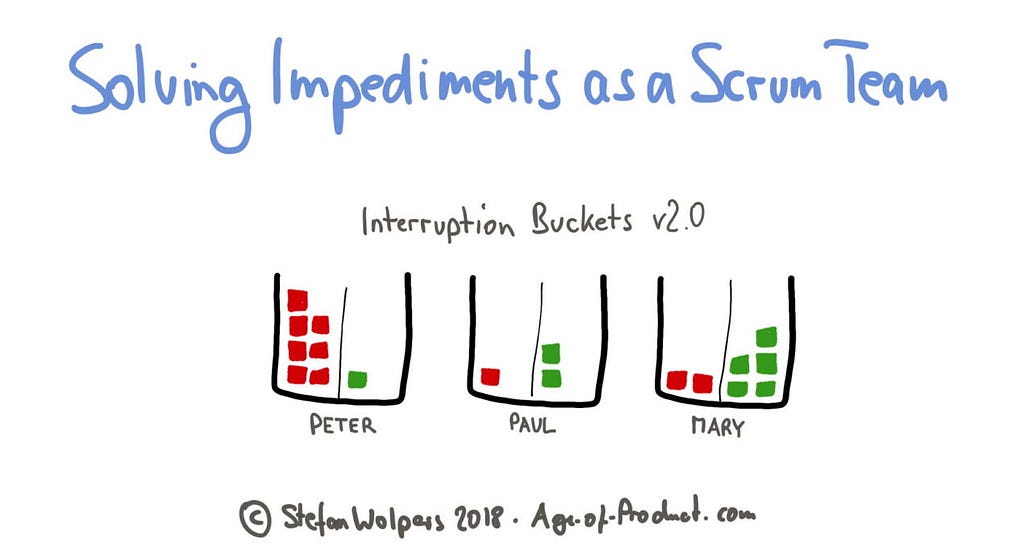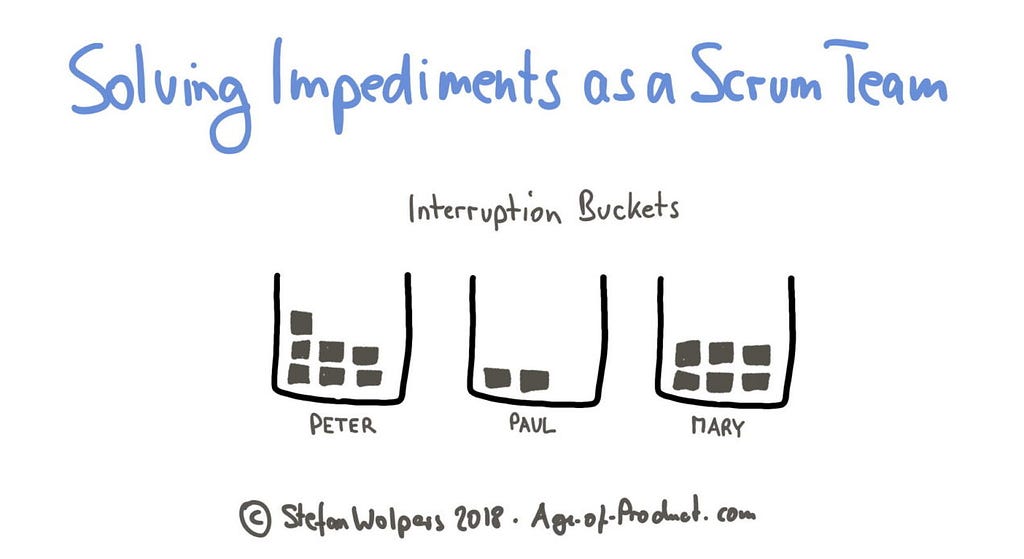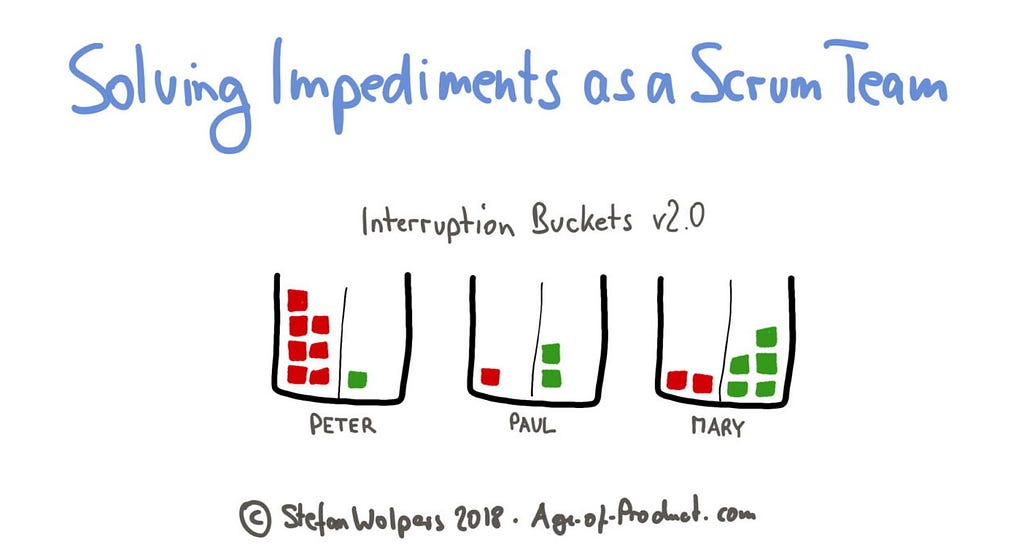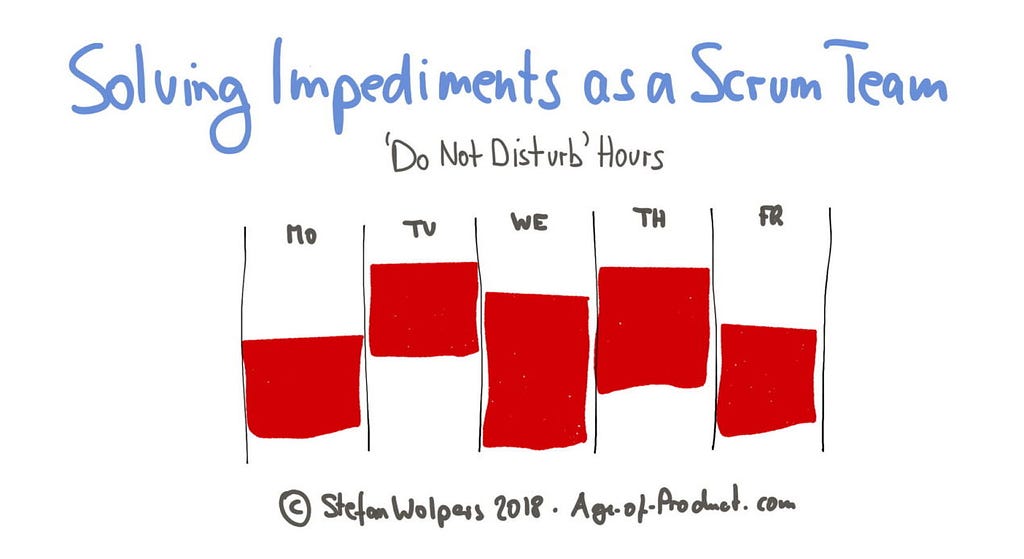Latest news about Bitcoin and all cryptocurrencies. Your daily crypto news habit.
Learn more on how to tackle impediments as a team by running experiments and iterating on the solution.
Types of Impediments
According to the Scrum Guide, the scrum master should be the right team member to deal with this kind of impediment:
“The Scrum Master helps those outside the Scrum Team understand which of their interactions with the Scrum Team are helpful and which aren’t. The Scrum Master helps everyone change these interactions to maximize the value created by the Scrum Team.”
However, there are various reasons why stakeholders — and particularly the senior management — are ignorant of basic agile concepts that are essential for the productivity of a Scrum team:
- They have never had an introduction to agile and lean practices in the first place. (This is undoubtedly is a rookie mistake; becoming agile requires that everyone in the organization at least receives a basic introduction into how ‘agile’ works.)
- Even if they received such a basic introduction to agile practices, they have never been introduced in flow theory and productivity. The effect of their interruptions is unknown to them. Probably, none of the scrum masters or agile coaches of the organization felt competent enough to teach the concept of flow. (This might also be partly attributed to the reputation of the standard textbook on this issue, Reinertsen‘s “Principles of Product Development Flow,” which is considered ‘difficult’ to read.)
- There also is an attitude among some senior managers that the ‘agile rules’ do not apply to them, no matter how often the scrum master points at their misguided behavior. Weak leadership will always find plausible reasons — by their standards — why their information requirements need to be handled in a privileged way. (Question: who do you escalate the issue to if the culprit is the Chief Product Manager, the CTO, or the CEO?)
The mere fact that stakeholders and managers interrupt the team is hence no reason to point at the scrum master but an excellent opportunity to tackle the issue as a team.
Agile Transition — A Manual from the Trenches
The latest, 245 pages strong version of “Agile Transition — A Hands-on Manual from the Trenches w/ Checklists” is available right here, and it is free.
Solving Impediments like the Interruption Problem as a Team
In this case, the team decided to approach the impediment at two levels:
- The scrum master reached out to the stakeholders and the management to offer a short training class at a convenient time slot late in the evening to educate them on the productivity issues of agile teams.
- The product owner created on the half of the team an interruption bucket poster on a wall in the team space. (Learn more about interruption buckets from Jimmy Janlén’s book “Toolbox for the Agile Coach — Visualization Examples, How great teams visualize their work.”)
At the next retrospective, two weeks into the experiment, the team analyzed the situation:
- The response of the stakeholders and the senior management to the workshop on team productivity was lower than expected. The offer did not reach the most ignorant culprits in particular.
- However, the interruption bucket managed to trigger discussions in the team area. It proved useful to add a sticky at the beginning of the interruption and pointing at the same time at the issues of interrupting the flow. Some stakeholders and managers were surprised to learn about the problems. At the end of the sprint, there even were reactions like “I will send you an email, I do not want another sticky in my column.” On the other side, the most notorious wrongdoer could not care less about the visualization.
Hence the team decided to iterate on the problem-solving approach:
- The scrum master was now seeking 1-on-1s with those who did not attend the workshop and piled up several stickies on the interruption bucket board.
- The interruption bucket received a make-over, now distinguishing between helpful and non-helpful interruptions. (Among all disruptions there were also useful interruptions that were just misdirected communication-wise.)
The team decided to introduce do-not-disturb-hours and visualize this schedule.
A sprint later, the impediment could be practically contained to a single person while the others appreciated coaching them on how to better interact with the Scrum team.
Conclusion — Solving Impediments as a Team
As so often, collaboration proves to be ground from which to grow a successful Scrum team. Tackling the impediment as a team by running experiments and iterating on the solution improved in this case the team’s productivity as well as its standing with stakeholders and the senior management. (Except for one, but that is another story.)
What lessons have you learned when collaborating as a team to solve an impediment? Please share with us in the comments.
If you enjoyed the article, do me a favor and smack the 👏👏 👏 multiple times — your support means the world to me!
If you prefer a notification by email, please sign-up for my weekly newsletter and join 19,635 peers.
📺 Join 825-plus Agile Peers on Youtube
Now available on the Age-of-Product Youtube channel:
- Agile Maturity and Agility Assessment: Is Agile a Fad or Trend?
- Agile Failure Patterns 2.0
- Product Owner Anti-Patterns
✋ Do Not Miss Out: Join the 4,075-plus Strong ‘Hands-on Agile’ Slack Community
I invite you to join the “Hands-on Agile” Slack Community and enjoy the benefits of a fast-growing, vibrant community of agile practitioners from around the world.
If you like to join now all you have to do now is provide your credentials via this Google form, and I will sign you up. By the way, it’s free.
Related Content — Solving Impediments as a Team
Survey: How Do You Solve Impediments Outside Your Team’s Control? (Anonymous.)
Download the ’Scrum Anti-Patterns Guide’ for Free
Solving Impediments as a Team was first published on Age-of-Product.com.
Solving Impediments as a Team was originally published in Hacker Noon on Medium, where people are continuing the conversation by highlighting and responding to this story.
Disclaimer
The views and opinions expressed in this article are solely those of the authors and do not reflect the views of Bitcoin Insider. Every investment and trading move involves risk - this is especially true for cryptocurrencies given their volatility. We strongly advise our readers to conduct their own research when making a decision.






